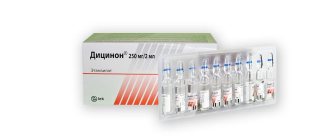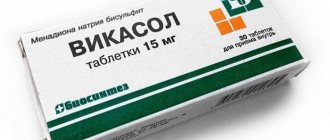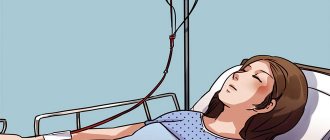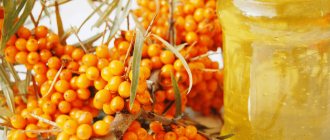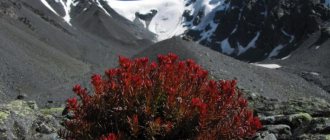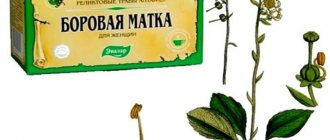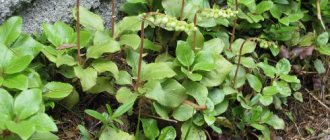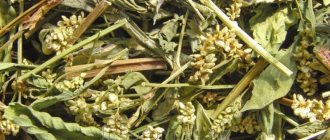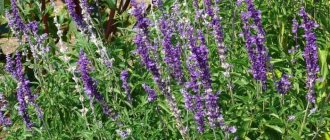The use of shepherd's purse in gynecology
To treat irregular menstruation, heavy menstruation and uterine bleeding, it is recommended to take an infusion of shepherd's purse (2 teaspoons of crushed herb are steamed with a glass of boiling water and infused under a lid or in a thermos for 2-3 hours).
Drink the infusion after filtering, ¼ cup 4 times a day, half an hour before meals. A medicinal mixture made from cinquefoil root, shepherd's purse herb and oak bark (4:4:1) has proven itself well in the treatment of female diseases. Two tablespoons of the collection are steamed in a thermos for 2 hours with ½ liter of boiling water. The strained elixir is taken 100 ml twice a day 30 minutes before meals for no more than 7 days.
It is advisable to drink general strengthening tea from the shepherd's bag in courses of 7 days during periods of virus activation and in unfavorable epidemiological conditions (winter-spring). In a teapot, steam 3 teaspoons of dried herbs and 12-15 raisin grains with a glass of boiling water, leave for 15-30 minutes, add 1 teaspoon of bee honey and drink warm 2 times a day, 100 ml.
- The break between courses must be at least 1.5 months.
- menstruation, which is accompanied by heavy bleeding and pain;
- vaginal discharge that is not normal;
- adenomyosis (characterized by the growth of the endometrium outside the uterus) and endometriosis (growth occurs only into the muscular uterine tissue);
- vaginitis (inflammatory diseases of the genital organs in women);
- decreases or loss of the ability of the uterus to contract (atony);
- initial manifestations of menopause.
The herb is used both internally and in the form of douching.
- The shepherd's purse is most widely used for painful, heavy periods. Taking the medicine helps reduce discharge, normalize hormonal levels and reduce pain. When a woman loses blood, she loses a large supply of iron, which the body then tries to replenish. The herb helps compensate for the loss of trace elements in the blood.
- Pathological vaginal discharge may vary in color and range from clear to yellow mixed with blood. But the main feature is the sensations during these discharges. Itching, burning, and dryness are noticeable. For these symptoms, treatment is carried out in combination, combining decoctions and douching with herbal mixtures.
- Vaginal rinsing is carried out in the morning, at lunch and before bed with a decoction of bagwort, yarrow, nettle, birch leaves (all 1 tbsp). The dry mixture is poured with a liter of water and boiled for half an hour. The product must be left for about an hour and strained through multilayer gauze. The syringe must be washed and disinfected before each use.
- During pregnancy, grass is strictly prohibited. This is due to the fact that it causes uterine contractions, which can lead to miscarriage at any stage.
- After childbirth, the use of decoctions will help with increased bleeding, but only after consultation with the doctor, since during breastfeeding, opinions about the safety of using products with bagworm are ambiguous. During menopause, herbal infusions or juice help cope with hot flashes and possible bleeding.
Shepherd's purse (the second name is purse) is rich in vitamins A, B, C, contains alkaloids, useful trace elements, acids, proteins and tannins. In gynecology it is used:
- during menstruation;
- during pregnancy (only in extreme situations, with severe toxicosis and vomiting, as prescribed by a doctor and under his supervision);
- with endometriosis;
- during lactation;
- bleeding;
- during the formation of fibroids.
Contraindications for shepherd's purse:
- pregnancy (if we are not talking about toxicosis);
- increased blood clotting, hypercoagulation;
- hemorrhoids and hemorrhoids;
- thrombophlebitis, thrombosis;
- individual intolerance.
The plant has medicinal properties, which are often used to treat various female diseases:
- anti-inflammatory;
- antifever;
- wound healing;
- astringent, diuretic;
- choleretic;
- normalizes blood pressure;
- stops bleeding;
- cleanses the blood.
For treatment with shepherd's purse it is used in different forms:
- tea;
- decoction;
- infusion;
- alcohol tincture;
- fresh grass.
Recipes and methods of use depend on the disease, its course, and the individual characteristics of the body. The most common ones are prepared this way.
The effectiveness of herbal medicine and other treatment methods
There are many methods in which the ingredients of selected plants are used for phytotherapeutic purposes. When treating fibroids, herbs are used whose active ingredients can reduce estrogen levels.
Yarrow tea, on the other hand, can regulate and relieve heavy and prolonged bleeding. It also has an antispasmodic effect. Shepherd's purse prevents menstrual bleeding, but also provides iron and has an anticonvulsant effect.
Measures to regulate blood flow are a top priority in treating fibroids because excessive or prolonged bleeding may be the most common indication for surgery. If the amount of bleeding can be adjusted, surgery can be delayed or prevented.
Hormonal stimulation in the context of reproductive medical treatment may also contribute to the development of fibroids. Therefore, depending on the size and location of the tumor, it may make sense to undergo surgery before infertility treatment. Because in the first months of pregnancy, uterine fibroids can grow very quickly.
If the fibroids are extremely small (up to 2 cm) and do not cause discomfort, then they do not need treatment. The appropriateness of treatment depends on what kind of fibroid it is. Also, the presence of a child, age and other concomitant diseases play a role in the choice of therapy. What are the symptoms and how harmful or even dangerous they are, only a gynecologist can help determine.
There are surgical and medical treatment options. As a rule, initial drug treatment is preferable. Sometimes the pill is tried, but often progestins or GnRH analogues or ulipristal acetate are used.
A single administration of progestins prevents ovulation, thus producing less estrogen and reducing bleeding. It may also reduce or stop the growth of benign tumors.
GnRH analogs mimic the hormones of the hypothalamus, which, in turn, secrete follicle-stimulating and ovulation-stimulating hormones. GnRH analogues target the brain, where they prevent ovulation. This puts the body into artificial menopause. Again, the hope is to prevent the production of estrogen and progesterone as much as possible to curb fibroid growth.
Ulipristal acetate is a chemical that has only recently been used. It changes progesterone receptors so it loses its own function. In this way, the growth of fibroids can be prevented. This medicine is used when it comes to shrinking fibroids.
Yarrow helps prevent fibroid growth
Small, solitary, and asymptomatic fibroids (usually less than 2 cm in diameter) are usually checked regularly by gynecologists. In such cases, to maintain hormonal balance, it is enough to regularly consume yarrow. The herbal remedy helps prevent tumor growth and further complications. However, for larger or multiple fibroids that cause bleeding or other discomfort, it is advisable to create a customized treatment regimen that includes injections and surgical interventions of varying complexity.
Since 2004, a new method of destroying fibroids has been approved worldwide, which the medical profession calls an “elegant and compatible method.” The patient lies on a device that combines magnetic resonance technology for monitoring and beams of ultrasound waves directed into the body with millimeter precision. In the case of “focused ultrasound,” tumors up to 8 centimeters in size are “sealed,” as it were. This treatment, which takes place over 2-4 hours on an outpatient basis, can be performed without anesthesia. It is especially suitable for young women who want to have children.
General medicinal properties of the shepherd's purse plant
In ancient Greece, the shepherd's purse plant was widely used as a medicine to stop uterine bleeding. In the modern world, medicine is very developed and there are many medications that cope well with these problems, but the value of a natural drug has not decreased.
In treatment with natural remedies, dry preparations are actively used, and official medicine sometimes turns to the properties of the plant in complex treatment. It is important to know not only about the benefits that the drug brings, but also contraindications, ignorance of which will lead to the opposite of the expected result.
Indications for use
The presence of beneficial vitamin K in the shepherd's purse gives it excellent hemostatic properties. As a result, the plant is prescribed for various types of bleeding, heavy menstruation, as well as for hemoptysis, which often occurs with pulmonary tuberculosis.
Shepherd's purse is used for hypertension along with sedatives, which helps to quickly relieve pressure. It is also prescribed for heart failure to reduce swelling.
With the help of this plant, you can cleanse blood vessels from plaques, as it has pronounced anti-sclerotic properties. Shepherd's purse is prescribed for diseases of the gallbladder, kidneys, as well as diarrhea and other diseases.
The use of shepherd's purse in gynecology
Not only does shepherd's purse have medicinal properties, but it also has contraindications - it contains substances that have a powerful effect on blood clotting. Therefore, preparations from the plant should not be taken by patients with increased blood clotting and hemorrhoids. Extracts are contraindicated for women during pregnancy, as they stimulate the muscular activity of the uterus.
When harvesting shepherd's bag, it is forbidden to collect raw materials from plants affected by pathogens, since many spores of fungi that parasitize the leaves of this cabbage crop are poisonous.
If you have any chronic diseases, before starting treatment with shepherd's purse and other medicinal plants, you must consult with a supervising specialist.
I wish you good health and active longevity!
Tags: women's health traditional herbal methods
Shepherd's purse herb has pronounced hemostatic properties. Therefore, it has found application in many areas of medicine: traumatology, gynecology, gastroenterology, etc.
It is noteworthy that bagworm is included in almost all herbal preparations, the purpose of which is to stop bleeding. The herb copes well with inflammation and feverish conditions, and also helps restore mucous membranes and relieve swelling. On the recommendation of your doctor, infusions and decoctions of shepherd's purse can be used for:
- Treatment of diseases of the gastrointestinal tract of various etiologies (dysentery, erosive gastritis, peptic ulcer with a tendency to bleed, inflammatory diseases of the stomach and duodenum).
- Improves appetite, eliminates digestive disorders such as diarrhea and flatulence.
- Normalization of the functioning of the digestive organs.
- Combating insomnia, stress and nervous tension.
- Improving the condition of the cardiovascular system, strengthening the heart muscle, normalizing blood pressure.
- Prevention of varicose veins, rosacea, hemorrhoids.
- Treatment of diseases of the genitourinary system (cystitis, pyelonephritis, enuresis, some STIs).
- Speedy healing of wounds, ulcers and bruises (external use in the form of compresses and lotions).
- Pregnancy (due to the risk of premature birth or early miscarriage). It is necessary to avoid taking it even during pregnancy planning, so as not to provoke a breakdown at the initial stage.
- Vascular diseases associated with the formation of blood clots (thrombosis and thrombophlebitis) or plaques.
- Increased blood clotting.
- History of strokes or heart attacks.
- Scanty discharge during menstruation.
- Haemorrhoids.
- Children and teenagers under 18 years of age.
Also, individual intolerance to any elements of the composition may serve as contraindications. In case of any allergic reactions, you should immediately stop taking the drug based on it. Even if there are no contraindications for use, you should carefully consider the dosages. An overdose of any form of the drug can lead to bloody diarrhea and kidney inflammation.
Plants collected near roads, where they grow in large quantities, contain many harmful substances. If it is not possible to prepare the medicine yourself, in order to be sure of the quality of the raw materials and the place of collection, it is better to buy from pharmacies where the quality of the products is documented. It is not recommended to buy directly from people, since there is no guarantee that the raw materials were collected in a clean place and tested for the presence of fungal disease.
Contraindications and side effects
Absolute contraindications for use:
- Hypersensitivity to herbal remedies
- Blood coagulation disorders
- Severe liver or kidney diseases.
Celandine, chamomile, yarrow and calendula can cause severe hypersensitivity reactions: urticaria, itching, dizziness, anaphylaxis or severe swelling. If any allergy symptoms occur, it is recommended that you stop taking the herbal remedies and consult a doctor.
There is no herbal remedy that kills fibroids. You can try to improve bleeding disorders with hormones ("birth control pills"), but success is not guaranteed. More radical hormonal treatment with so-called GnRH analogues leads to blockade of estrogen production, albeit to a decrease in proliferation, but also to artificial menopause with all possible side effects. As fibroids grow back after the release of such hormones, this therapy is mainly used to improve surgical conditions or in women just before menopause.
Herbs for uterine fibroids should absolutely not be used as a replacement for normal treatment. The choice of herbal remedies should be discussed with your doctor.
For the treatment of nodular fibroids, hormonal drugs or surgery are used. The use of herbs for uterine fibroids can be prescribed as a supplement by the attending doctor, however, for small formations without symptoms, treatment with folk remedies alone is possible. The disease can be hidden for a long time, so it is often diagnosed when uterine fibroids are large. Pathology can have a negative impact on reproductive function, leading to infertility, miscarriages, and disruption of labor.
Fibroids are a fairly common tumor in the uterus, most often arising due to hormonal imbalance in a woman’s body and forming from muscle tissue - the myometrium. The peak incidence falls on women from thirty to thirty-five years of age, but the pathology can be diagnosed at any age after the onset of puberty and even during menopause.
Description of the shepherd's purse plant
The common shepherd's purse has an erect or branched single simple stem with a height of 20 to 60 cm. The stem comes in two types: with a short pile in the form of thin hairs in the lower part or completely bare. Near the thin spindle-shaped root there is a rosette of leaves with raised and sharp-toothed edges, which have an elongated shape.
The flowers of the shepherd's purse have the correct shape. Each flower consists of four 35mm petals. The flowers form a white flower cluster located at the crown of the stem. At first the brush resembles an umbrella, but over time it begins to lengthen.
The fruits of the shepherd's bag are pod-shaped and resemble inverted hearts. They consist of 2 veiny and thin boat-shaped valves with a small notch (0.5−0.6 mm) in the upper part of their connection. The average size of one pod is 5 – 8 mm.
The nests, which are located inside the pod, are filled with many small yellow-brown grains, shaped like a flattened oval. The average length of one seed is 1−2.5 mm, and the width is 0.5−0.75 mm. Seeds are available in winter and spring. They germinate twice a year and ripen from May to September.
Shepherd's purse has a high level of productivity. One plant produces from 40 to 70 thousand seeds per year, which can maintain their field germination for 5–6 years.
Shepherd's purse is an unpretentious plant that can grow almost anywhere the soil suits it. You can often see grass growing in or near road cracks, gardens and fields. Prefers temperate and tropical climate zones. Belongs to the Cruciferous family. The plant is an annual plant with a very short life cycle of 1.5 months. But fruiting ends with the release of a large number of seeds, which will germinate the next year.
The grass received its name due to the similarity of the shape of the seed pods with the shepherd's bag. But this is not the only name. Cosmopolitan grass can be called field buckwheat, heart grass, sparrow's eye, and many other names that people have given it.
During menstruation
Many women suffer from pain before and during the menstrual period. They are often delayed and untimely, which prolongs these painful processes. If your period is late, it is recommended to drink grass juice with honey.
You need to take this mixture 5 times a day, 1 tsp. after meal. To prepare juice, you need to take the above-ground part of the plant, which is still young. Finely chop and squeeze. If your period does not appear on time, you are late and at the same time you feel incredible pain, often pulling in the lower back and lower abdomen, then use an infusion of herbs.
Infusion recipe for delayed menstruation:
- 2 tbsp. l. pour 200 ml of boiling water over the bagworm;
- let it brew for 2 hours;
- strain without fail;
- take 4 times a day, 1 tbsp. l.
Chemical composition and healing effect on the body
- organic acids: bursic, malic, fumaric, citric (improves metabolism), ascorbic, tartaric (antioxidant);
- carotene – fights free radicals, immunostimulant;
- vitamin K – prevents bleeding, fragility of blood vessels;
- saponins – have expectorant, diuretic and laxative properties;
- amines – a toxic substance, an organic derivative of ammonia;
- flavonoids – protect blood vessels from ruptures, promote elasticity, anti-edematous effect;
- phytoncides – a natural antibiotic that inhibits the growth of pathogenic microorganisms;
- choline, inositol, tyramine, tannins, rhamnoglycoside hysopin.
- decrease in blood pressure;
- for bleeding of various localizations (as a hemostatic agent);
- in the treatment of cancer patients;
- disinfectant for treating wounds;
- as a mouth rinse for inflammatory lesions;
- blood purification for damage to the kidneys, liver, gallbladder, bladder;
- complex periods of menstruation.
photo of plant
The herb has not lost its relevance even now, for example, the medicinal properties of shepherd’s purse are actively used in gynecology, urology, pulmonology, nephrology, and homeopathy. The healing properties of the above-ground part of the plant are due to the biologically active components it contains.
The vegetative mass contains proteins, tannins, organic acids (bursic, fumaric, citric, malic, tartaric), glycosides, saponins, phytoncides, vitamins (carotenoids, choline, thiamine, riboflavin, ascorbic acid, phylloquinone), mineral salts of potassium, phosphorus, calcium, magnesium, sodium, silver, copper, boron and other valuable chemical elements. The ripened seeds contain up to 20% fatty oil.
Blank
The herbaceous plant belongs to the Brassica family, grows as a weed along roads, roadsides, embankments, ditches, as well as in gardens and orchards, while collecting medicinal raw materials is not difficult even for the laziest lovers of herbal medicine. Shepherd's purse (the second official name of the plant is shepherd's purse) is harvested in June-July, cutting off the above-ground part using pruning shears or a knife. Plants that have reached the seed formation stage are not used as medicinal raw materials.
Drying of the collected shepherd's purse grass is carried out outdoors in shaded places (under awnings) or in rooms with well-organized ventilation (barn, attic, summer veranda, loggia, balcony), spreading the greens in one layer on paper sheets or pieces of natural fabric.
On an industrial scale, after harvesting from the plantation, grass is dried in special dryers at a temperature not exceeding 45°C. Dry herb, packaged in cardboard boxes or paper bags, retains its medicinal qualities for 2 years.
Fresh greenery from the plant is collected in early spring, when young shoots appear after the snow melts. It is recommended to cut them off immediately before adding them to dishes, since when stored in the refrigerator, some of the beneficial substances are destroyed.
Shepherd's purse greens contain:
- vitamin A,
- B vitamins,
- vitamin C,
- vitamin K,
- choline,
- acetylcholine,
- tyramine,
- flavonoids,
- proteins,
- carbohydrates,
- coumarins,
- various tannins,
- phytoncides,
- malic, citric, tartaric, fumaric organic acids,
- saponins,
- bursic acid,
- potassium,
- hyssopin rhamnoglycoside,
- essential oils and some other biologically active substances beneficial to the human body.
The composition of the seeds of the shepherd's bag contains a small amount of allyl mustard oil and about 18 - 20% fatty oil.
Shepherd's purse (medicinal properties extend to multiple gynecological pathologies) is also called a woman's herb. To eliminate problems with the reproductive system, a wide range of synthetic drugs are produced from plant materials. Ready-made herbal infusions with natural ingredients are especially popular among patients.
Remedies using shepherd's purse herb help relieve the following negative conditions:
- Menstrual irregularities. Decoctions and juice from fresh herbs help normalize menstruation. They help restore the cycle, even if it is disrupted due to hormonal imbalance.
- Menstruation, accompanied by severe pain and heavy bleeding. You can improve your well-being, relieve pain and reduce blood loss by drinking tinctures and tea from the plant.
- Menopausal syndrome. Infusions help improve sleep, relieve irritability and fatigue. Compliance with the course of therapy will help reduce the intensity of hot flashes and low tides.
- Uterine bleeding after childbirth. Decoctions of dried herbs stop uterine bleeding, eliminate inflammation, normalize the contractile properties of the uterus, and strengthen immune functions.
- Inflammation of the appendages and uterus. The anti-inflammatory and antimicrobial effect allows the use of shepherd's purse to stop the pathological process in adnexitis and endometriosis.
This is necessary to select the correct dosage and optimal treatment time, as well as to prevent possible side effects.
The grass contains a large amount of vitamins, especially if the plant is in the flowering phase. It was experimentally established that the flowering shepherd's purse contains:
- Ascorbic acid (up to 1100 mg%).
- Carotenoids (up to 25 mg%).
- Vitamin K (up to 12 mg%).
- Rhamnoglycoside.
- Organic acids.
- Minerals (the grass contains a lot of potassium salts).
- Coumarins.
- Flavonoids.
- Beta-sitosterol.
- Glycosides.
- Alkaloids.
- Histamine.
- Sulfur-containing compounds.
What herbs to drink for uterine fibroids
Herbs for fibroids are conventionally divided into four main groups:
- Possessing antitumor properties;
- Analgesic;
- Hemostatic;
- Anti-inflammatory.
There are good reviews about plant treatment among doctors and patients.
Women need to remember that if you have fibroids, you cannot treat with herbal hot baths, as well as compresses on the stomach and lower back.
- hog uterus;
- calendula;
- celandine;
- red brush;
- burdock;
- yarrow;
- nettle;
- shepherd's purse
- buckthorn.
These and other plants can stop the growth of formation, reduce pain, eliminate blood loss, and increase hemoglobin. Herbal treatment of uterine fibroids will be effective if you buy raw materials for the preparation of medicines only in a pharmacy or collect them yourself.
Hog queen
To treat uterine fibroids, ortilia unilateral (the second name of the plant) is often used. It is an effective folk remedy that helps fight microbes and inflammatory processes. The plant also has a diuretic effect. The main components of boron uterus are phytohormones that normalize female hormonal balance. Ortilia decoctions are also drunk for endometriosis, which often occurs in conjunction with fibroids. Borovaya uterus for fibroids is probably the most used plant.
Calendula
Marigolds (calendula) are used as an anti-inflammatory and antihypertensive agent. Also, this yellow flower prevents pathogenic microflora from multiplying and has choleretic, diuretic and sedative properties. Thanks to the active substances of the plant, body temperature decreases during fever and the blood is cleansed.
Celandine
The herb contains alkaloids that relieve pain, cramping and have an antitumor effect. You can prepare decoctions and tinctures from celandine, but you must strictly follow the dosage when preparing and taking medicines from this plant, since it is poisonous in large quantities.
Red brush
A decoction of red brush root is widely used in gynecology to eliminate inflammation and uterine bleeding. The plant has a beneficial effect on the nervous system, helps improve the immune system, and acts as an antispasmodic. To prepare the decoction, you need to take the crushed root of the red brush in the amount of one tablespoon, add two hundred and fifty milliliters of boiling water and leave in a water bath for fifteen minutes. After straining, you need to add boiling water to the previous volume. Take the decoction one teaspoon three times a day before meals. It is necessary to be treated in this way for a month, after which you take a break for two weeks.
Burdock
Burdock root for fibroids has a cytostatic effect and helps the tumor decrease in size. The leaves of the plant can also be used for therapy, but they will not give results so quickly. Burdock improves metabolic processes, normalizes the functionality of the kidneys and liver. It also helps to heal small wounds, if there are any on the endometrium of the uterus.
Brief information about the plant
Shepherd's purse is a weed that has a wide distribution area. It can be found in almost any region, with the exception of the Far North. The prevalence of the plant can be explained by its unpretentiousness and the ripening of a large number of seeds.
In folk medicine and pharmacology, the above-ground parts of the plant are used - leaves, stems and flowers. The presence of browned seeds in the composition of plant raw materials is not expected. Therefore, it is collected during the flowering period, which occurs from May to August.
Preparations containing this plant have a powerful hemostatic effect. At the same time, they improve intestinal motility and reduce blood pressure.
Reviews of the folk remedy
- I took Shepherd’s Purse for an endometrial polyp, and my doctor prescribed it. It became much easier.
- I used this herb during an injury and immediately began to feel better. I recommend Shepherd's Purse to everyone for treatment.
- Shepherd's purse helps well with knee pain if you put it on the sore spot along with the stems and secure it with a bandage. Tested by my own experience.
Shepherd's purse is a storehouse of useful vitamins and substances, so traditional medicine has long used it to treat various diseases. But before using drugs based on Shepherd's purse, you need to come for a medical consultation, as they have contraindications.
During pregnancy
Shepherd's purse is one of the many plants that is also contraindicated during pregnancy. Primarily due to its ability to nourish the body with the substances tyramine and acetylcholine that the plant contains. Even bleeding that may occur during pregnancy cannot be stopped with a shepherd's purse.
But at the same time, some doctors practice it for severe toxicosis during pregnancy. It is not used independently, but in combination with other plants and components.
Recipe for preparing an infusion for toxicosis:
- Mix 60 g shepherd's purse, 40 g peppermint leaves;
- 2 tbsp. l. pour 500 ml of boiling water over the resulting collection;
- cover with a lid and let it brew for half an hour;
- strain and add 1 tbsp. l. honey;
- take 50 ml 4 times a day.
Patient reviews
I experienced severe uterine bleeding after a cesarean section. My mother-in-law advised me to treat myself with a shepherd's purse. Improvements came within two days. So I advise you, this herb really helps wonderfully.
Alexandra is 27 years old.
I got rid of cystitis by using the herb in the form of a decoction. You can collect this plant yourself, rather than spending a lot of money on purchased medicines. The product is effective, it was recommended to me by a doctor, who told me how to prepare it correctly. I drank the decoction for exactly three days, and I felt better.
Treatment with shepherd's purse herb for various diseases
Heavy menstruation
- Improves hormonal levels.
- Normalizes discharge.
- Pain relief
Drink 1 tablespoon of decoction up to 4/rd. Gradually discontinue as soon as the condition returns to normal.
Bleeding
- Anti-inflammatory.
- Astringent.
3 times a day before meals, 1 spoon.
Delay of menstruation
- Normalizes hormonal levels.
Mix a teaspoon of juice with honey. Drink several times a day until the onset of menstruation.
- Disinfects.
- Relieves inflammation.
Decoction and douching 2-3 times a day.
Hypertension
- Lowers blood pressure.
- Dilates blood vessels.
Tincture, according to instructions.
Climax
- Relieves hot flashes.
- Prevention of bleeding.
Tea, 2 times a day.
Urinary incontinence
3 tbsp. l. pour two glasses of boiling water into a thermos and leave for 2 hours. After this, strain and take a couple of tablespoons a day 4 times half an hour before meals.
Diarrhea
- Restores the chair.
- Replenishes the loss of microelements.
A dessert spoon of dry herb is poured with a glass of boiling water and infused for 10 minutes. Use 2 times a day. You can divide 400 ml of decoction throughout the day.
Rehabilitation therapy after diarrhea
- Helps restore the intestines.
- Enriches with useful substances.
In tincture form, 10 drops three times a day. The course is two weeks.
Externally
- Wound healing.
- Disinfectant.
- Hemostatic effect.
Place a spoonful of the dry mixture in a glass of water, boil for a minute, then leave for 30 minutes. Wipe affected skin areas with sterile cotton wool or gauze pads
It is important to remember that all recommendations are given in general and may change depending on the characteristics of the disease or additional drug treatment. Therefore, you should not self-medicate; it is important to discuss the dosage of the medication with your doctor.
Features of the pathology
Uterine fibroids are a benign neoplasm (tumor) of the uterus that does not always require treatment. Depending on where fibroids develop, they can also cause menstrual pain, heavy bleeding, and other symptoms.
Myoma consists of muscle cells and connective tissue. They vary in size, shape and location. In diagnosis, fibroids are differentiated by location:
- directly under the endometrium (submucosal fibroids);
- in the wall of the uterus (intramural fibroids);
- on the outside of the uterus (subserous fibroids);
- on the cervix (cervical fibroids);
- in the connective tissue of the uterus (intraligamentary fibroids).
Many women do not feel that they have fibroids. Some have only one tumor, others have up to 3. Women between the ages of 30 and 50 most often suffer from uterine fibroids.
- heavy or prolonged menstrual bleeding;
- severe spasmodic menstrual pain;
- vague pain and pressure in the abdomen.
Cramping menstrual pain is one of the symptoms of fibroids.
Typically, fibroids cause discomfort when they interfere with the function of the uterus. Especially neoplasms that are located directly under the uterine mucosa lead to heavy menstrual bleeding. Anemia can be a consequence of heavy menstrual bleeding. Affected women are often pale and feel tired.
Large fibroids sometimes put pressure on neighboring organs - the bladder or intestines. Therefore, the risk of involuntary urination or stomach upsets (constipation, pain) increases. It is rare to experience back pain or urinary retention.
For endometriosis
Endometriosis is a pathology that largely depends on hormones. In most cases, the uterine lining tissue grows into the muscle layers. There are 4 degrees of this disease.
The main signs of endometriosis are:
- pain in the lower abdomen, which worsens during menstruation;
- pain during sexual intercourse;
- spotting after menstruation;
- presence of blood in urine and feces;
- pain during bowel movements and urination;
- infertility;
- gaining extra pounds in a short time.
To treat endometriosis, herbs are used that can stop bleeding, restore hormonal levels and relieve pain. Shepherd's purse has such properties.
Infusion recipe:
- 1 tbsp. l. herbs pour 200 ml of boiling water;
- leave to infuse for 1 hour;
- strain through cheesecloth;
- take 4 times a day, 1 tbsp. l. 30 minutes before meals.
How do medicinal herbs work?
Medicinal plants have a beneficial effect on the body, but before talking about what medicinal qualities certain herbs have, it is necessary to know the causes of uterine fibroids, or rather, the factors leading to its development.
Among them the most basic:
- Hormonal imbalance;
- Weakening of the immune system;
- Hereditary predisposition;
- Hypertension;
- Endocrine diseases (obesity, diabetes).
Main symptoms and signs of fibroids:
- changes in the menstrual cycle;
- painful sensations in the lower abdomen and lower back;
- intermenstrual and contact bleeding;
- dysfunction of the intestines and bladder.
Based on this list, as well as from the symptoms described above, it becomes clear that herbs for fibroids:
- slow down or even stop the growth of tumors;
- relieve pain during menstruation;
- make the menstrual cycle regular;
- stop bleeding;
- remove inflammation;
- improve the immune system;
- normalize metabolic processes in the body;
- normalize hormone levels.
Every woman, giving preference to medicinal plants, should know what herbs to drink for uterine fibroids.
Composition and preparation of grass
photo of plant
Preparation
When harvesting, the first thing you need to remember is that grass absorbs all heavy metals, therefore, even though it can often be found along the road, it is better not to collect it in these places. Harvesting begins during the flowering period, which runs from mid-spring to autumn. In dry weather, cut off the top part of the plant with sharp pruning shears.
After the raw material is cut, it must be immediately sent for drying, since storage can lead to damage to the material. You can tell that the greens are well dried by the fragility of the stems. Stored in a cool, dry place for up to 3 years. It is best to place in fabric or paper bags.
Symptoms
Each woman has an approximate estimate of how much blood she loses monthly during her menstrual period. On average it is 150 ml, about 20 - 30 ml per day. With heavy menstruation, their number increases significantly, and clots often appear. Some compare them to pieces of liver. Abundant days can be either all days or only 3-5 of them.
If a woman is constantly bothered by heavy periods, then the body may not have time to compensate for blood loss - anemia occurs, the symptoms of which depend on the degree of its manifestation. It can be determined by the following characteristics:
- pale skin,
- weakness,
- lethargy,
- increased fatigue,
- shortness of breath during normal physical activity and even walking,
- frequent dizziness.
Correction of hemoglobin levels immediately leads to the disappearance of all symptoms.
When breastfeeding
After giving birth, women have several new problems in the body that need to be overcome. Almost any woman, having become a mother, wants to breastfeed her child, but at the same time she needs to take care of her health. Many drugs, vitamins and herbs have contraindications during lactation; shepherd's purse is an exception.
If necessary, prepare a decoction:
- 1 tsp. pour 200 ml of boiling water, let boil for 2 minutes;
- let sit for half an hour;
- filter the resulting broth, take 3 times a day, 1 tbsp. l.
When time is pressing: means to quickly stop bleeding
Can it be taken orally for hemorrhoids and varicose veins? – No, these diseases are among the contraindications, since the drug thickens the blood.
What is the danger of an overdose during menstruation? – In addition to a pseudo-allergic reaction, blood clotting disorders, bloody diarrhea and inflammation of the genital area are possible. Dosages must be coordinated with a gynecologist and used strictly according to the prescription and under supervision.
Can it be taken for hypertension? – Yes, the herb reduces and normalizes blood pressure, therefore it is indicated for hypertension. You need to drink tea from dry collection, but no more than 2 cups per day.
Can it be used as a means of contraception? – You need to understand that this method provides an extremely small percentage of protection, and only on certain days, so it is dangerous to use it. In alternative medicine, pure juice is used for contraception, diluted with water 1:1 and drunk 40 drops 3 times a day. This remedy can serve as an anti-inflammatory.
What medications is the herb incompatible with? – Cannot be taken with medications that increase clotting. There is no more detailed official data on this issue, therefore, when combined with any drugs, a mandatory consultation with your doctor is required.
Summarize
Nature has given us many medicines that will help improve the health of the body and prevent serious disorders. The core is a plant unique in its composition and properties. Medicines based on it affect the hematopoietic system, making the blood thicker and stopping bleeding, especially in women. Having the opportunity to prepare the grass yourself, you can dry it 2-3 goals ahead and use it as needed. The collection and storage process should be taken seriously; it is important to study the procurement options and be able to distinguish high-quality raw materials from spoiled ones.
Having replenished your personal first aid kit with such a natural hemostatic agent, it is important to follow the dosage and administration regimens. Despite the fact that the effect on the structure of the blood is the very first beneficial effect, the core is also famous for its wide range of assistance, affecting the genitourinary system, having wound healing and disinfecting properties.
Source
If blood loss is so severe (for example, with uterine bleeding) that it threatens the woman’s life, then hemostatic drugs are used in the form of injections. They act almost instantly. Here is a list of medications that are used in such cases:
- Dicynone in solutions for intravenous administration. Increases blood viscosity and stops bleeding within 10 minutes. If the composition is injected into the muscle, you will have to wait about 2 hours. The effect will last up to 6 hours;
- Tranexam. After an intramuscular injection, the result can be felt within 30 minutes;
- Oxytocin. Leads to contraction of the uterus, which helps stop blood loss. Intended for intravenous and intramuscular administration;
- Etamzilat. When injected directly into a vein, it will begin to act within 5 minutes.
Precautions and contraindications
Long-term use of shepherd's purse can lead to the formation of blood clots, so it is not recommended to increase the treatment period indicated in the recipes.
If shepherd's purse has not been used before, it is better not to start taking it with a full dose. On the first day, it is advisable to use a fourth part. This will help to identify the individual tolerance of the active components. If no allergies occur, then on the second day you should take half, and on the third day drink the entire recommended portion of the decoction.
Use traditional methods only after examination and identification of the source of the problems that have arisen, in consultation with your doctor.
Bagworm should not be taken if you have the following diseases:
- thrombophlebitis;
- increased blood clotting;
- haemorrhoids;
- low blood pressure.
The herb increases the tone of the smooth muscles of the uterus, so it should not be taken during pregnancy.
Bagworm occupies a worthy place in the list of hemostatic agents for the treatment of female diseases. It is also famous for its antiseptic and mild analgesic effect. But, like any other remedy, it should be taken with caution, taking into account contraindications.
For uterine bleeding
There are many reasons why uterine bleeding may occur:
- hormonal imbalance;
- stress;
- fatigue;
- climate change;
- infectious diseases;
- intoxication of the body.
A tincture of shepherd's purse in 70% alcohol will help quickly eliminate and relieve pain. It can be purchased at a pharmacy or prepared at home:
- pour the crushed raw materials with 70% alcohol, in proportions 1:1;
- put in a dark place, but not cold, for 2 weeks;
- After 14 days, strain;
- take before meals, 1 tsp. 20–30 drops of tincture.
Beneficial features
The healing properties of the shepherd's purse were already known to the doctors of the ancient world, who used the grass seeds as a hemostatic agent. Nowadays, urinary grass is used in folk and scientific medicine, as well as in veterinary medicine, mainly for pulmonary and uterine bleeding.
The entire above-ground part of the plant - stems, flowers, green fruits - is used as medicinal raw material. Fresh herbs (the leaves have pronounced phytoncidal activity) or natural juice from shepherd's purse are considered the most effective. An adult plant with ripe fruits is not used for preparing decoctions, teas and infusions.
The most important property of shepherd's purse is the plant's ability to have a hemostatic effect. In this regard, field buckwheat is often used for uterine, pulmonary, renal, hemorrhoidal and gastrointestinal bleeding.
It has been experimentally proven that shepherd's purse preparations help normalize blood pressure and stimulate the contractile activity of the uterine muscles.
Infusions, decoctions, teas and alcohol tinctures from this plant have pronounced choleretic, wound-healing, antipyretic, anti-inflammatory, vasodilating, antifever, diuretic, astringent, and blood purifying properties. In addition, they are often used as an addition to chemotherapy to neutralize and remove toxic substances.
The shepherd's purse has also found use in cooking: in different countries, young leaves are added to salads and first courses, and they are used as a filling for pies. Old herbs can be used as an additive to broths, and ground grass seeds are an alternative to mustard.
Medicinal raw materials are prepared in the spring. Dry it in dark places (for example, in the attic), laying it out in a thin layer. Store in paper or canvas bags in a dry place. The plant retains its healing properties for 3 years.
